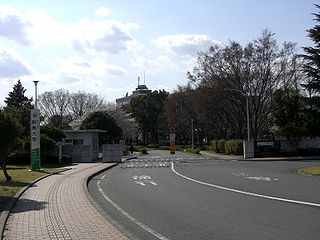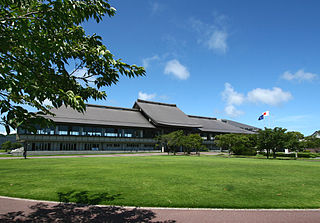
A vocational school, sometimes also called a trade school, career center, or vocational college, is a type of educational institution, which, depending on the country, may refer to secondary or post-secondary education designed to provide vocational education, or technical skills required to perform the tasks of a particular and specific job. In the case of secondary education, these schools differ from academic high schools which usually prepare students who aim to pursue tertiary education, rather than enter directly into the workforce. With regard to post-secondary education, vocational schools are traditionally distinguished from four-year colleges by their focus on job-specific training to students who are typically bound for one of the skilled trades, rather than providing academic training for students pursuing careers in a professional discipline. While many schools have largely adhered to this convention, the purely vocational focus of other trade schools began to shift in the 1990s "toward a broader preparation that develops the academic" as well as technical skills of their students.

Nakayama Miki was a nineteenth-century Japanese farmer and religious leader. She is the primary figure of the Japanese new religion Tenrikyo. Followers, who refer to her as Oyasama (おやさま), believe that she was settled as the Shrine of Tsukihi from the moment she experienced a divine revelation in 1838 until her death in 1887.

The Imperial Japanese Army Academy was the principal officer's training school for the Imperial Japanese Army. The programme consisted of a junior course for graduates of local army cadet schools and for those who had completed four years of middle school, and a senior course for officer candidates.
Nagasaki University is a national university of Japan. Its nickname is Chōdai (長大). The main campus is located in Bunkyo-machi, Nagasaki City, Nagasaki Prefecture, Japan.
Kanazawa University is a national university of Japan in the city of Kanazawa, the capital of Ishikawa Prefecture.
Tenri University is a Japanese private university in Tenri, Nara Prefecture, an independent part of the secular mission of the new religious movement Tenrikyo. It was established in February 1925 as the coeducational Tenri Foreign Language School, enrolling 104 students, and was reorganised as a university in April 1949.

Okayama University is a national university in Japan. The main campus is located in Tsushima-Naka, Okayama, Okayama Prefecture.

Yokohama City University (YCU) is a public university, in Yokohama, Japan. As of 2013, YCU has two faculties with a total of around 4,850 students, 111 of whom are foreign. YCU also has four campuses and two hospitals. YCU is a member of the Port-City University League (PUL), and a core member of the Japanese University Network in the Bay Area (JUNBA). In 2017, YCU has been ranked #16th among "world's best small universities" in 2016-2017, ranked at 23rd among life sciences institutes in Japan.

National University Corporation Tottori University, abbreviated to Toridai (鳥大), is a national university in Japan. The main campus is located in Koyamachō-Minami, Tottori City, Tottori Prefecture. Another campus, the Faculty of Medicine, is located on the Yonago Campus in Yonago, Tottori.

Gunma University, abbreviated to Gundai (群大), is a national university in Japan. The main campus is located in Aramaki-machi, Maebashi City, Gunma Prefecture.

International Budō University (IBU) is a private university in Katsuura, Chiba, Chiba Prefecture, Japan, established in 1984. The university has a specialized curriculum in physical education, specifically the budō Japanese martial arts, sports, and physical culture. In addition to martial arts training, the university also offer theoretical classes of various subjects and especially budō history.
The oyasato-yakata (おやさとやかた) complex is a collection of buildings in Tenri City, Nara, Japan, that form an incomplete square 872 metres (2,861 ft) on each side surrounding the Divine Residence (Oyasato), a structure sacred to the Japanese new religion Tenrikyo. The task of revitalizing the area around the Residence was informed by both religious prophecy and city planning, and construction began in 1954 on a project that continues today. The oyasato-yakata is a massive organizational undertaking that is understood by Tenrikyo adherents as a spiritual practice, creating a model city that reflects their belief in a Joyous Life. As such a practice it has involved the entire Tenrikyo community, from the volunteers who assist in construction to professors who plan the scope of future wings. Archaeologists have also excavated ancient artifacts beneath its foundations.

Tenri Central Library is the library of Tenri University. It has notably extensive collections in antiquarian material, including original manuscripts from 13th-century Japan, and artifacts of European exploration and early visits to Japan. Dating to 1926, the library predates the university itself. It has its origins in the private collection of the family of the foundress of Tenrikyo, Oyasama.
Polytechnic schools in Japan are vocational education institutions for short and long term programs, a group of public human resources development facilities under paragraph (1) (i) of Article 15-6 of the Human Resources Development Promotion Law. It involves designated private sector as well.
The History of Tenrikyo concerns the social and institutional development of Tenrikyo, from the day the teachings were founded by Miki Nakayama in October 26, 1838, to the present day.
The following is a timeline of the Tenrikyo religion, highlighting significant events since the birth of Tenrikyo's foundress Miki Nakayama. Specific dates are provided in parentheses; the lunar calendar is indicated with ordinal numbers while the Gregorian calendar is indicated with name and number.
This article presents a selected bibliography of Tenrikyo.
Tenrikyo theology is the theology of the Tenrikyo religion. The discipline of Tenrikyo theology consists of scriptural studies, historical theology, dogmatic theology, and practical theology.










